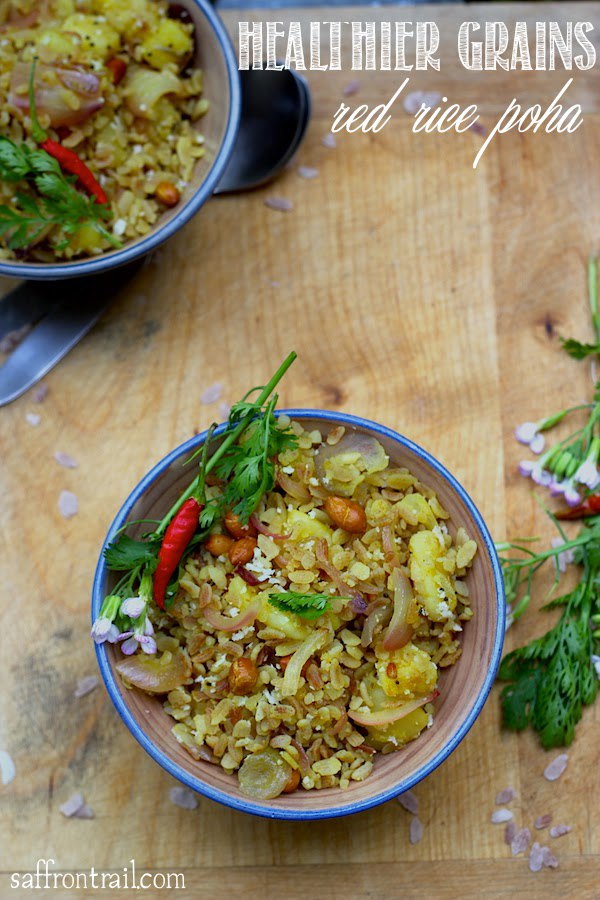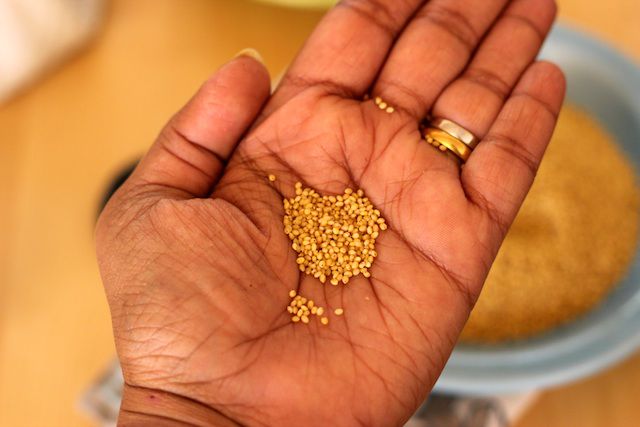

Brown rice, red rice, quinoa, amaranth, barley, millet, foxtail millet – all these grains are getting a good share of limelight these days and rightfully so. The difference between polished and refined grains and the ones above is that they are processed less, thereby lesser chances of them being stripped out of nutrients.

When a grain is processed, it ends up losing important components like bran and germ, and thereby loses vital fiber, vitamins and minerals. The lesser processed the grain is, the more nutritious it is for you.
Watch my video on 4 grains that are a good alternative to white polished rice:
Benefits of whole grains are well known to all, but here’s the gist
Quality nutrition: **For reasons mentioned above, for each portion of whole grains eaten, you get more antioxidants, vitamins, minerals and fiber, as compared to a refined grain.
Satiety: **This is one of the reasons why they say eating whole grains is better for weight management. A slice of whole grain bread is more filling than a slice of white bread. Same goes for a serving of cooked barley or millets over a serving of white polished rice. You get filled up with lesser quantity and it keeps you filled up for longer, fighting the urge to eat very frequently.
Health benefits: **Whole grains and unrefined grains reduce the risk of diseases like heart disease, diabetes, cancer and so on. Several studies have shown the positive effect of a diet rich in whole grains on the above diseases.
They do take longer to cook than processed or refined grains. They also need some getting used to, especially for a palate that has enjoyed refined flours and grains for a long long time. But once you choose healthier options, it does get easier on the palate, also knowing how much better they are for your family and your health
How to eat whole-grains?
- Eat instead of rice, along with dal / sambar / kadhi etc
- Use as a substitute for rice in pulaos and rice dishes
- Add to salads to make it a complete meal
- Make breakfast items like idli / dosa / upma etc
- Cook the grains really well and use as filler in veggie burgers, cutlets etc
Red rice poha is flattened red rice. Since the rice is not polished, you can see the red specks on the poha and it does take longer to cook than the white poha
Red rice onion and potato poha makes a delicious breakfast or tiffin. It has a little bite to it as compared to the white poha, due to higher fiber content

Red Rice Batata Poha
Serves 4 | Prep time – including soaking time: 50 minutes
Cooking time: 20 minutes | Serve as breakfast or a lunchbox item

Red Rice Poha - Choosing Wholegrains
Ingredients
Method
- Wash the poha well, drain the water and soak in 6 cups water for 20 minutes.
- After 20 minutes, drain in a colander and keep covered for 30 minutes.
- In a large wok/kadai, heat the oil.
- Splutter the mustard and cumin seeds.
- Add the raw peanuts and stir on medium flame until they turn darker shade.
- Add the curry leaves, green chillies, and saute until the curry leaves turn bright green.
- Add the sliced onions, turmeric powder and salt. Stir well and cook covered for 5-7 minutes until the onions have softened.
- Add the diced potato and toss well.
- At this stage, add the well softened red rice poha, fresh coconut and stir until everything is mixed well.
- Cover and let this steam cook for 5-7 minutes, until the poha is cooked but has a slight bite to it.
- Switch off flame, add lemon juice and mix well.
- Serve and garnish with coriander leaves and extra lemon wedges.



Hi!
Hi
Hi. I tried this recipe. The only issue I faced was that after I soaked 2 cups of red rice poha in 6 cups of water, they became too soft and get squished easily. Any suggestions?
Hello! Thanks for trying my recipe – you do need to drain out excess water before using it in recipe. this is just to rehydrate the rice flakes.
Thanks Nandita. Will try and let you know
Soaked for 20 minutes and its become like Pongal! Shld have read these comments before!
Srikanth: step 2 clearly says you must drain all the water 🙂 but pongal wont taste bad 😛